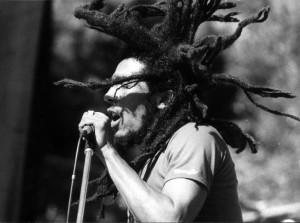Anytime Justin Bieber posts a photo to Instagram, tens of thousands of teens across America go wild. But when the pop star uploaded a series of pics ahead of the iHeart Radio Awards Sunday night, he created a different sort of reaction: a backlash.
The photo revealed Bieber’s signature blond locks in what appeared to be the early stages of knotty dreadlocks. Fans were quick to call him out for cultural appropriation – something the pop star has been accused of in the past. And so here we are again – and the reaction is no surprise.
White people wearing dreadlocks has a fraught legacy in the Americas. And to many African Americans, it is a hairstyle that represents a reclamation of black identity. It is a hairstyle of protest and beauty, a restoration of justice and rejection of western European (read: white) beauty standards.
So did Justin know what he was getting into? Maybe. The series of pics of his new coif were a chronicle of a backlash foretold. In a separate video shared on Twitter, he told artist Big Sean, “‘You want to be black’ and all of that stuff people say. I’m like, ‘It’s just my hair.’”
Yeah … OK, but nah. Maybe he’s experimenting. Biebs’s commitment to his new look may only last as long as a week. But if he’s really into it, a cheat sheet of the long and extraordinary political and spiritual history of locked hair is in order.
Brief history of the dreadlock
The tradition of locked hair among sadhus, Hindu mystics, predates Christianity. For them, it is an ascetic practice: the sadhu severs connection with his family, renounces his worldly possessions and lives a life of celibacy as prescribed from the sacred texts Paramahamsa Parivrajaka Upanishad. “JaTaa” or jata, which means “twisted lock of hair”, is covenant between themselves and Shiva, the god of destruction and regeneration.
The origins of locked hair have also been traced to ancient Egypt. Anthropologists discovered mummies with locked hair intact. Translations from Hebrew and Christian scriptures tell the story of Samson, a Nazarite and judge, whose locked hair was the source of his strength, and which was famously cut with dire consequences.
Bahatowie priests of the Ethiopian Coptic church locked their hair since the fifth century, but the practice absorbed political meaning when Italy invaded Ethiopia in 1935, forcing Emperor Haile Selassie (Ras Tafari) into exile. Some Jamaicans, under British colonial rule, believed Selassie was a messiah, descended from David, a prophecy foretold in the Christian Book of Revelation. Guerrilla warriors under the command of Ras Abebe Aregai swore not to cut their locks until Selassie was restored to the throne. Rastafarianism was born.
As images circulated of colonial-ruled peoples in Ethiopia and later Kenya, the hairstyle was adopted in Jamaica. Dreadlocks as a term finds its origins in the corrosive tongue of British imperialists in Jamaica.
In Kenya, Kikuyu freedom fighters known for their locked hair fought their British colonial foes. In Dread: The Rastafarians of Jamaica, Father Joseph Owens notes, “locks especially are considered to be a vital link with anciency, since they symbolise man’s yearning to return to the unsophisticated ways of ‘creation-living’ … [They] are the sign of the ancient covenant between God and his people.”
The social and political consciousness of the 1970s, from the black pride and power movements in the United States to Rastafarianism – kindled by its greatest ambassador, Bob Marley – popularized the hairstyle, culture and politics. Marley sang freedom songs and kindled a reclamation of “dreadlock” from an insult to a term of empowerment and self-determination of a formerly colonized and oppressed people.
By the late 1990s in the US, a hairstyle that had been persistent viewed as rebellion, “unkempt”, became a fuller realized expression of pride and beauty, supplanting the popularity of the afro, and is ubiquitous today. So it was curious that just last year artist Zendaya had to field insults from Giuliana Rancic and educate her on the choice to wear locks to the Oscars. Or by contrast, a fashion magazine would celebrate Kylie Jenner’s side cornrows as a “bold statement” and simultaneously regard darker-skinned women donning the same style with lesser esteem.
Bieber’s locked hair, while traditionally connected the spiritual and political identities of people of color, could be viewed as appropriation, but in his case, perhaps a faith-based rationale will later emerge. For now, it’s just hair.
Article Courtesy The Guardian




